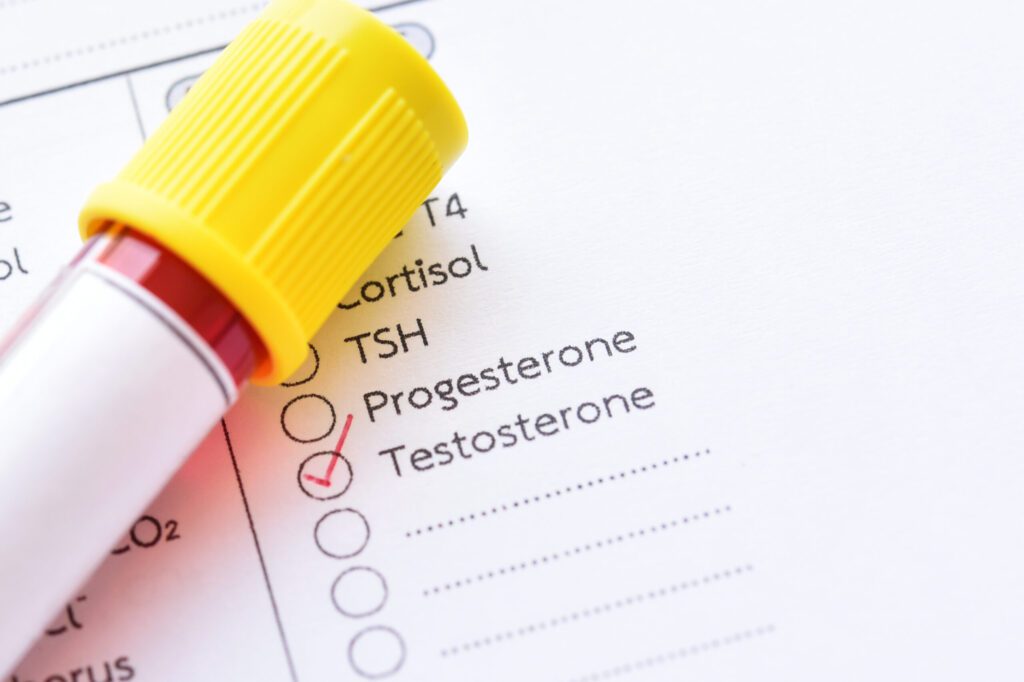Understanding the Causes of Decreased Hormone Production
by TERESA SCHIFFER
In recent years, low testosterone has gained awareness thanks to increased coverage in the news and media. Consequently, men have been seeking treatment for low testosterone in higher numbers.
Testosterone is the hormone that gives men their “masculine” characteristics, but it also helps maintain and develop other important physical characteristics, such as muscle mass, bone density, and adequate levels of red blood cells.
The range of testosterone considered normal is typically 300 to 1,000 nanograms per deciliter. Low testosterone, often referred to as low T, is diagnosed when levels fall below 300 ng/dL.
To better understand the impact of testosterone levels in men, we spoke with Watson Clinic urologist Dr. Mark Swierzewski. Swierzewski has more than 20 years of experience in men’s health, and he’s been involved in the research and treatment of such issues as low testosterone, sexual function, and benign prostatic hyperplasia (BPH).
Low testosterone is fairly common, with about 40 percent of men over the age of 45 thought to be affected. While a decrease in testosterone levels is a normal part of getting older, there are also some health conditions that can cause this hormone to drop.
“Low testosterone is typically part of the aging process and the result of decreased production of testosterone,” Swierzewski says. “The cause of low testosterone is typically multifactorial.”
Hypogonadism, the medical term for having low testosterone, is divided into two types – primary and secondary. Primary hypogonadism is caused by a decrease in the amount of testosterone produced by the testicles. Secondary hypogonadism occurs when there is a problem with the pituitary gland and it is not sending out adequate messengers to the testicles to produce testosterone.
There are a number of conditions that can occur alongside hypogonadism, with diabetes being perhaps the most common. This is why it is important to consult with a physician who is knowledgeable in the causes and treatment of hypogonadism if it is suspected that low testosterone is a problem.
“The most common symptom of low testosterone is irritability,” Swierzewski says, “which is followed by fatigue and malaise. Decreased cognitive function also can be a sign or symptom of low testosterone. Typically, sexual side symptoms are not as common, but lower libido or decreased sexual function can be a sign of low testosterone.”
Diabetes, sleep apnea, and mood disorders are some common factors in men that can contribute to low testosterone levels, but there are other diseases that can cause hypogonadism that a patient may not be aware of. Generally, men are not tested for testosterone levels during a routine physical examination. However, if the patient expresses concern about symptoms associated with low testosterone, the physician may deem it wise to perform some screenings.
“Patients who are being evaluated and treated for low testosterone should be evaluated for risks of having underlying diseases,” Swierzewski says, including diabetes, sleep apnea, and mood disorders. “Patients with low testosterone should also be evaluated with a prolactin to ensure they do not have a pituitary tumor that may be causing disruption of the testosterone production access in the body. Although these prolactin producing tumors are not common, they should be part of the screening process of men with low testosterone.”
Older men who have had a testicle removed are at greater risk for low testosterone, as are individuals who have suffered a head injury that may have impacted the function of the pituitary gland. HIV can also lead to hypogonadism.
When a physician or urologist determines that low testosterone is the cause of a man’s symptoms, the most common form of testosterone replacement is an intramuscular injection of oil-based testosterone administered every week or every other week. This is the safest and most effective method of replacing testosterone and is usually covered by insurance if the patient is being treated by their regular doctor. It does not require a patient to visit a freestanding men’s health clinic, most of which are not covered by insurance plans.
There are also topical testosterone treatments available, as well as extended released implantable pellets. These treatments have various pros and cons that should be thoroughly discussed beforehand. Topical treatments can be available at a local pharmacy via prescription, whereas testosterone implants are often offered by specialists who may or may not be covered by a patient’s insurance.
When properly administered, testosterone replacement therapy has plenty of benefits.
“Properly treated low testosterone can increase a man’s feeling of well-being and stamina, and reduce the symptoms of irritability, fatigue, and malaise,” Swierzewski says. “There is some evidence of improved cognitive function as well as an ability to maintain lean body mass. Additionally, there is some evidence that it has a positive effect on diabetes. It can also improve libido and sexual function.”
